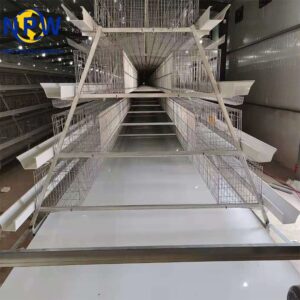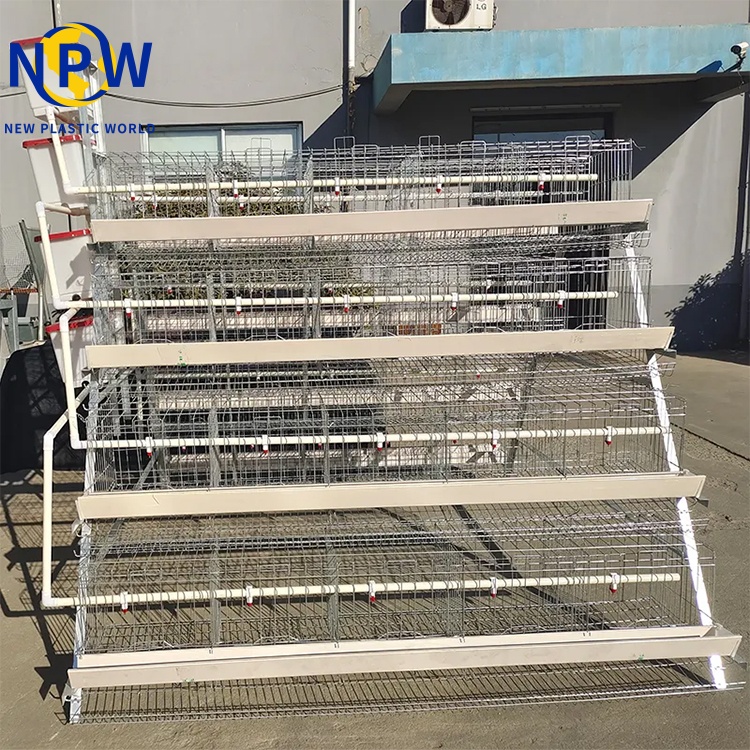In modern poultry farming, the number of tiers in layer cages directly impacts space utilization, initial investment, production efficiency, and daily management complexity. Currently, 3-tier and 4-tier battery cages are the most common options. Though similar in appearance, they differ significantly in structure, applicable scenarios, and economic benefits. Which one fits your farm best? Let’s compare them comprehensively.
1. Structure and Size
The key structural difference between 3-tier and 4-tier cages lies in height, which affects their adaptability to poultry houses.
- 3-tier layer cages: Typically 1.8–2.2 meters in total height. They fit almost all poultry house sizes and work exceptionally well with manual operations.
- 4-tier layer cages: Generally 2.4–2.8 meters tall, requiring poultry houses with a minimum height of 3 meters. They are more compatible with automated management systems.


While their floor space usage is comparable, 4-tier cages offer 30% or higher capacity than 3-tier models, significantly boosting space efficiency.
2. Output and Economic Benefits
Poultry farms aim to maximize egg production and profits. Here’s how the two compare:
- Unit production capacity: 4-tier cages house more chickens and produce more eggs, directly increasing total output.
- ROI (Return on Investment): Though 4-tier cages require a 10–15% higher initial investment, their superior unit production capacity shortens the payback period.
- Land cost savings: In land-scarce areas (e.g., urban peripheries in Africa or mountainous regions in Asia), 4-tier cages reduce the required poultry house area, cutting construction costs.
In summary, 4-tier cages are recommended if budget allows, as their mid-to-long-term returns are higher.
3. Operational Convenience and Maintenance
More tiers mean greater challenges in daily operations, especially for manually managed farms.
- 3-tier cages: Easy for workers to feed, collect eggs, and monitor chicken health—ideal for farms relying on manual labor.
- 4-tier cages: Higher tiers complicate management. Equipping them with automated systems (e.g., egg collectors, feeding machines, manure removal systems) reduces labor intensity and costs.
If your poultry house can’t accommodate 4-tier cages but has sufficient labor, 3-tier cages offer flexible, manageable operations.
4. Ventilation and Chicken Comfort
Poultry house structure directly impacts ventilation and lighting, affecting chicken health and egg-laying performance.
- 3-tier cages: Larger gaps between tiers ensure better ventilation and heat dissipation, benefiting chickens in warm climates.
- 4-tier cages: Ventilation is slightly inferior. A robust system (including exhaust fans and cooling pads) is necessary, especially in high-temperature regions.
Thus, 3-tier cages are preferable in tropical or hot-humid areas. 4-tier cages work well if the poultry house has good ventilation.
5. Recommended Scenarios
Based on farm scale and site conditions, here are tailored suggestions:
| Farm Type | Recommended Cage Type | Reason |
|---|---|---|
| Family farms, small-scale | 3-tier | Easy installation, flexible operation, low investment. |
| Medium-scale | 3-tier or 4-tier | Depends on labor availability and automation level. |
| Large modern farms | 4-tier | High automation ensures maximum economic benefits. |
| Land-scarce areas | 4-tier | Reduces poultry house area and construction costs. |
| Poorly ventilated/hot areas | 3-tier | Better ventilation improves chicken comfort. |
6. Customer Case Studies
- Nigerian client: Initially used 3-tier cages for 5,000 chickens. After switching to 4-tier cages, capacity increased to 7,000, egg output rose by 38%, and annual income grew by 25%.
- Indonesian client: Despite high temperatures, 4-tier cages with exhaust fans maintained healthy flocks and drastically reduced labor costs.
Conclusion
Both 3-tier and 4-tier cages have pros and cons. The choice depends on your farm size, site conditions, management methods, and budget. For high-profit goals and modern farming standards, 4-tier cages are optimal. For small-scale farms prioritizing affordability and flexibility, 3-tier cages are practical.
Need personalized advice? Contact us for a free, customized quote to maximize your farm’s profitability!

